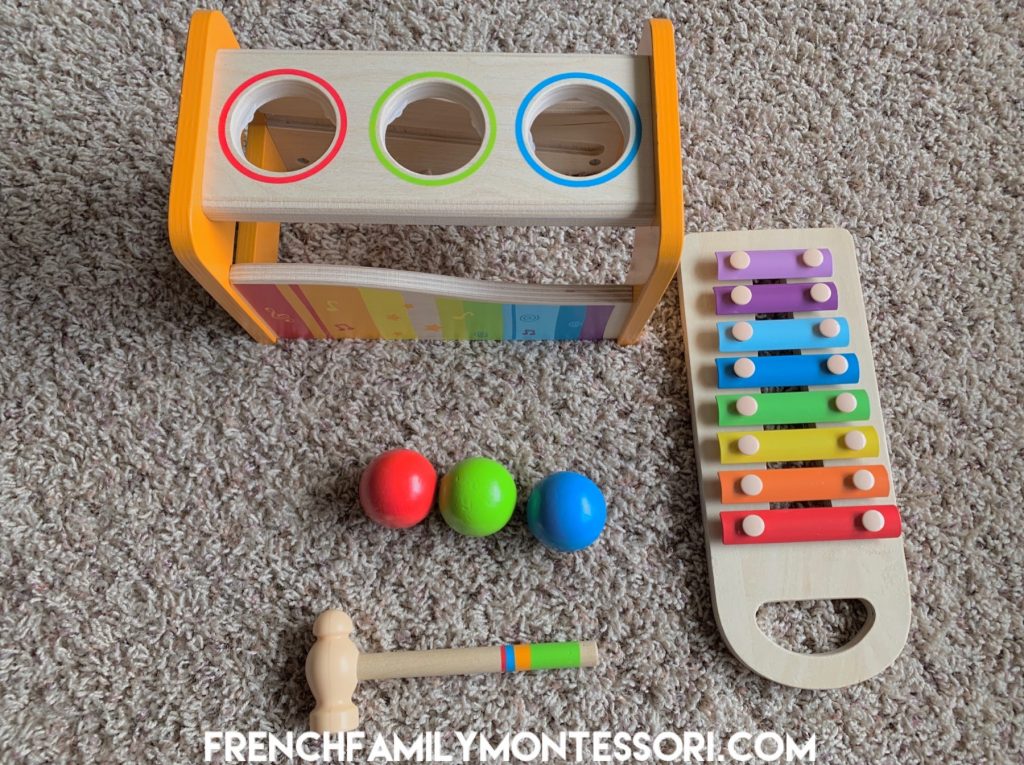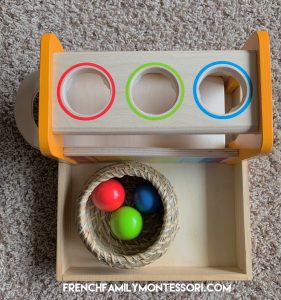
Not all wooden toys can be considered Montessori-friendly and many toys made from plastic and such, are. So what makes a toy Montessori-friendly and how to make a toy already owned meet your needs?
Yes, many “Montessori” toys are made of natural material, but this isn’t a requirement. The reason many Montessori families tend to acquire toys made from such materials is because they hold up over time, are beautiful, and are often simple designs. They tend to be more eco-friendly and better for overall health (this is often debatable).
When choosing toys, you need to look at what’s important to your family. For us, it’s that the materials be natural, easy to use, self correcting, and realistic. That being the case, Schleich animals, even thought they are plastic, are loved by our family. The detail they provide is more important than them being made from wood. For other families, this may not be the case, and that’s ok. Most other toys our girls own are wooden, stainless steel, cotton, glass, and rubber.

As I mentioned, not all wooden toys would be considered Montessori-friendly, they may need to be altered for simplicity and early introduction. We have one popular wooden toy that I realize needed to be changed to make it fit our current needs, it was a little too busy for them to use now. I love that the toy can be used in a few different ways, meeting different developmental needs over time, while saving money and storage space.

With a little addition, the Hape pound and tap bench fits their current needs and will for the next few years. When I purchased it originally, I thought the ramp could be flipped over to be used without noise. I want them to focus on pushing the balls in the holes, using it as they would their permanence box but with slight resistance to strengthen arm muscles, instead of with the addition of the xylophone. Adding the xylophone makes it a little too much stimulation for them right now, a simple ramp would be perfect. So Hubby created one. With that, they can work on pushing the balls through (working on their strength and coordination), or hammer them, without the xylophone.
In a separate tray, they have the xylophone and hammer. They are enjoying music and learning cause and effect: I hit the instrument with the hammer and it makes noise. As they continue practicing their aim and building strength, they’ll go on to use the hammer with the ball on the ramp. Once they have a grasp on these two works separately, and are showing they need a different challenge or the work needs to be more engaging, we can combine them for a whole new experience, as the toy was originally intended.


We realized that the painting on the side could be a little too much. So my sanded the paint off, so only fresh wood was visible.

If you would like to find out more what makes a toy Montessori, check out the class offered by Nicole Kavanaugh, from The Kavanaugh Report, and Aubrey Hargis, from Child of the Redwoods.
Have you altered any toys to make them more Montessori-friendly?
This post contains affiliate links at no extra cost to you.

One thought on “MAKING A TOY MORE MONTESSORI-FRIENDLY”